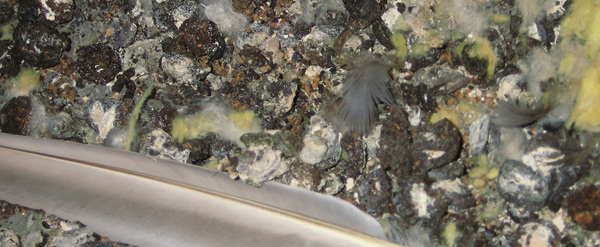- info@wildlifeanimalcontrol.com
Call us for help in your town
Wildlife Control Education
Are pigeon feces dangerous to touch or breathe?
There is a fair amount of questions surrounding
the possible health risks associated with pigeon
droppings. The fact is that direct contact like
touching pigeon feces with the hands, may in
fact pose a small health risk. However, it is
only in the context of very large quantities
that serious health problems might start to
occur. For example, more common household
activities such as the cleaning of windows, will
not typically result in the exposure to health
risks. There are basically three human diseases
known to be associated with pigeon feces. These
are Histoplasmosis, Cryptococcosis, and
Psittacosis.

The first of these diseases, Histoplasmosis,
grows in pigeon droppings in soil in the form of
a fungus. In a household sense, it is
recommended that when cleaning droppings, a
person must avoid breathing in some of the
fungus. However important to note, is that it is
only in cases of very high exposure that
infection can occur. The second disease,
Cryptococcosis, is another fungal disease
associated with pigeon feces that grows in soil
across the globe. As for this disease, it is
highly unlikely that generally healthy people
will become infected- even at high levels of
exposure. The third disease called Psittacosis,
is a rare infectious disease that primarily
affects parrots and other birds such as
cockatiels, parakeets and even pigeons
themselves. In humans, this bacterial disease is
very rare. With less than one human infection
case identified each year, most people with good
immune systems need not be concerned.
None of the above mentioned diseases associated
with pigeon feces are transmittable from one
human to another. As can be inferred from the
discussion of the various diseases, pigeon feces
around workplaces and homes do not pose a
serious health risk to the general public.
Routine cleaning of droppings such as windows
and railings is not problematic as to the
advancement of any of these diseases for most
people. However, one can never be too careful
and there are a few simple provisions that can
be taken to further reduce direct contact with
pigeon feces. Two good ways to avoid direct
contact with pigeon feces include wearing
disposable gloves. It’s also a good idea to wear
clothes that can be washed after a cleaning
session. Other protective type clothing like
disposable coveralls, boots, and respirators can
also be used for proper protection. In the case
of high-powered water hose that is used to strip
off dried droppings, it is recommended that dust
control measures be taken. One example is
covering the area with plastic sheeting. Last
but not least, once the structures have been
properly cleaned, they should be regularly
washed to prevent further accumulation of pigeon
feces.
Go back to the How to
get rid of pigeons home page.
Need pigeon removal in your hometown? We service over 500 USA locations! Click here to hire us in your town and check prices - updated for year 2020.

















